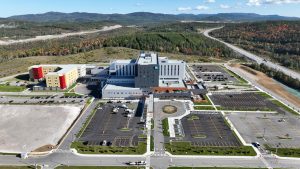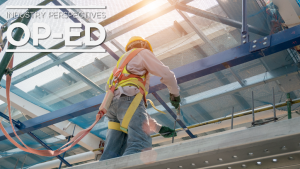With Canada’s 2020 National Building Code (NBC) covering new construction now open to public review, one might ask how the country intends to deal with today’s existing buildings.
Experts say 70 per cent of these will still be around in 2050, the timeframe within which Canada has committed to reaching net-zero emissions under the Pan-Canadian Framework on Clean Growth and Climate Change (PCF).
Talks concerning “a model code for existing buildings” began in 2016. Five years later in August 2021, Canadians were told to expect a retrofit code called the AEB (Alterations to Existing Buildings) by 2030. This created a conflict with the PCF commitment “to develop a model code for existing buildings by 2022, with the goal that provinces and territories adopt the code.”
In the absence of leadership from above, some provinces and municipalities began using their authority to move beyond conventional codes in order to reach their own stated retrofit objectives. Specifically, they started implementing minimum energy performance standards (MEPS).Â
Kevin Lockhart, efficient buildings lead with Efficiency Canada, MEPS as, “a type of building performance standard that can drive deeper and more certain energy savings and emissions reductions, and faster. Alongside an AEB code based on the voluntary action of the building owner and triggered by major equipment changes, change of occupancy type, or by the adding or reconfiguration of building spaces, these jurisdictions can look to MEPS to reach deeper energy and emissions reductions, in a broader swath of buildings in less time.” Â
Lockhart points out Canada already has in place two nationally recognized building performance rating systems, the EnerGuide Rating System and Energy Star Portfolio Manager. Â
“MEPS can also help governments pursue their policy priorities in ways the AEB is not structured to,” he writes. “MEPS are one of the select regulatory tools that set a clear path towards reducing energy use and emissions in buildings, and in a way that conventional building codes cannot. By signalling the desired end-state of the existing building stock, MEPS provide the certainty needed to encourage deeper energy retrofits while providing policy-makers with the flexibility to target specific segments, building archetypes, and/or specific municipal objectives. They can also provide a focal point for funding mechanisms.”
Codes are necessary to effect retrofit activity at scale, given the instinctive reluctance of owners in the private sector to make such investments, largely due to the uncertainty of owning the buildings long enough to enjoy the full ROI benefits.
The push-pull stalemate between voluntary action and regulation could have continued indefinitely had it not been for the mandate letters sent by the prime minister to the minister of natural resources and the minister of innovation, science and industry on Dec. 16, 2021. These made the federal government’s expectations clear.
They mandated the “development of model building codes…that align with national climate objectives and provide a standard for climate-resilient buildings” that would include “publishing a net-zero emissions building code and model retrofit code by the end of 2024.”
Brendan Haley, director of policy research at Efficiency Canada, also the mandates added “emissions” as an objective within the model code whereas previously it had been narrowly focussed on energy efficiency.  Bumping the release of an AEB code forward by five or six years was also an aggressive move.
Lockhart told the Daily Commercial News work is underway and progress is being made.
“It’s a challenge to say the least. There are voluntary triggers required, but the triggers cannot be too onerous or those retrofit activities will not be undertaken. Even so, voluntary triggers alone will not be sufficient and won’t capture the scope and scale of retrofit activities that we need. Building performance standards would capture the worst-performing buildings on the market in a number of different ways in order to set them on a path to be net-zero energy ready. Combining codes and energy standards would be the ideal path.”
John Bleasby is a Coldwater, Ont.-based freelance writer. Send comments and Climate and °µÍř˝űÇřion column ideas to editor@dailycommercialnews.com.











Recent Comments
comments for this post are closed